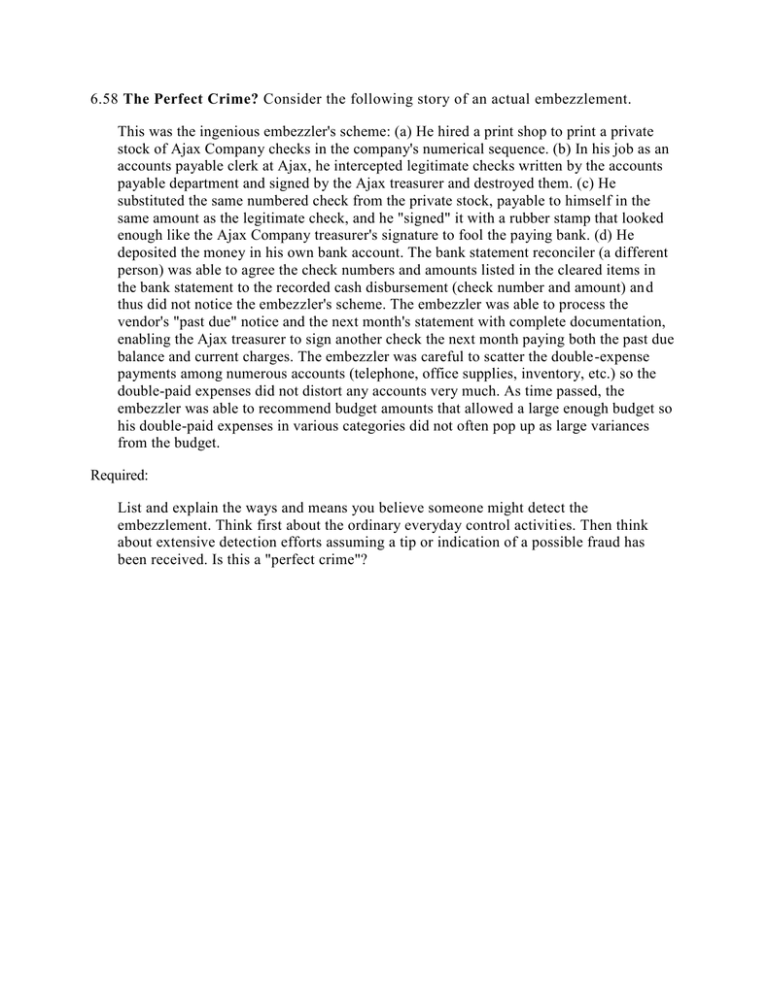6-58
advertisement

6.58 The Perfect Crime? Consider the following story of an actual embezzlement. This was the ingenious embezzler's scheme: (a) He hired a print shop to print a private stock of Ajax Company checks in the company's numerical sequence. (b) In his job as an accounts payable clerk at Ajax, he intercepted legitimate checks written by the accounts payable department and signed by the Ajax treasurer and destroyed them. (c) He substituted the same numbered check from the private stock, payable to himself in the same amount as the legitimate check, and he "signed" it with a rubber stamp that looked enough like the Ajax Company treasurer's signature to fool the paying bank. (d) He deposited the money in his own bank account. The bank statement reconciler (a different person) was able to agree the check numbers and amounts listed in the cleared items in the bank statement to the recorded cash disbursement (check number and amount) an d thus did not notice the embezzler's scheme. The embezzler was able to process the vendor's "past due" notice and the next month's statement with complete documentation, enabling the Ajax treasurer to sign another check the next month paying both the past due balance and current charges. The embezzler was careful to scatter the double-expense payments among numerous accounts (telephone, office supplies, inventory, etc.) so the double-paid expenses did not distort any accounts very much. As time passed, the embezzler was able to recommend budget amounts that allowed a large enough budget so his double-paid expenses in various categories did not often pop up as large variances from the budget. Required: List and explain the ways and means you believe someone might detect the embezzlement. Think first about the ordinary everyday control activities. Then think about extensive detection efforts assuming a tip or indication of a possible fraud has been received. Is this a "perfect crime"?


